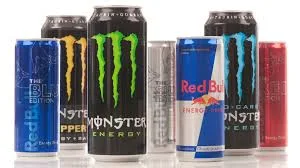Plantains, also known as plátanos, are closely related cultivars of fruit
or dessert banana.
In general, they are treated as vegetables in the kitchen much like fellow
tropical produces such as potatoes,
taro, breadfruit, yam, sweet potatoes,
etc. Indeed, plátano are one of the staple sources of carbohydrates for larger
populations. Plantain is so rich that it is consumed in almost every part of
the world.
Plantain is quite different from dessert banana, being taller and larger
and more drought tolerant. It is a perennial herbaceous plant that develops
from the underground rhizome. Like bananas, it too flourishes well under
tropical moisture-rich, humid low-lying farmlands. At maturity, the rhizome
gives rise to flower (inflorescence) that is carried up along its smooth,
elongated, un-branched stem, piercing through the center of pseudo-stem, finally
emerging out at the top in between its leafy clusters.
Plantain relatively has more calories weight for weight than that in the
table bananas. 100g
plantain holds about 122 calories, while dessert banana has only 89 calories.
Indeed, they are very reliable sources of starch and energy; ensuring food
security for millions of inhabitants worldwide. It contains 2.3 g of dietary fiber per 100 g (6% of DRA per 100 g). Adequate amount of
dietary-fiber in the food helps normal bowel movements, thereby reducing
constipation problems.
Fresh plátanos have more vitamin C than bananas. 100g provide 18.4 mg or 31%
of daily required levels of this vitamin. Consumption of foods rich in
vitamin-C helps the body develop resistance against infectious agents and scavenge
harmful oxygen-free radicals. However, boiling and cooking destroys much of
this vitamin in plantains. Plantains carry more vitamin A than bananas. 100 g fresh ripe plantains
contain 1127 IU or 37.5% of daily required levels of this vitamin.
As in bananas, they too are rich sources of B-complex vitamins,
particularly high in vitamin-B6 (pyridoxine). Pyridoxine is an important
B-complex vitamin that has a beneficial role in the treatment of neuritis,
anemia, and to decrease homocystine (one of the causative factors for
coronary artery disease (CHD) and (stroke episodes) levels in the body. In
addition, the fruit contains moderate levels of folates, niacin, riboflavin and
thiamin.
They also provide adequate levels of minerals such as iron, magnesium,
and phosphorous. Magnesium is essential for bone strengthening and has a
cardiac-protective role as well. Fresh plantains have more potassium
than bananas. 100 g
fruit provides 499 mg of potassium (358 mg per 100 g for bananas).
Potassium is an important component of cell and body fluids that helps control
heart rate and blood pressure, countering negative effects of sodium.
At maturity, plantains are generally harvested unripe and right away
carried to the market for sale. Look for firm, mature, deep green, well-formed
plantains that feel heavy in hand. Do not buy overripe, damaged, split fruits,
as they stay poor. Once at home, store them open at room temperature for up to
4-5 days. Once ripen, plantains too, like bananas, are very
fragile and show signs of decay in short time span.
Plantains are inedible raw and should be eaten only after cooked. To
prepare, just wash the raw fruit in cold water and mop dry using paper cloth.
Using a paring knife, trim either ends. Then, cut the fruit into short lengths,
split the skin superficially along the ridge and peel the skin gently away from
the flesh to get firm flesh inside. Oftentimes, the whole fruit may be
barbequed with its skin. Otherwise, its peeled flesh may be cut into thin
slices, grated, chunks treated much like potatoes in many traditional African
and West-Indian cuisine.
Plantains make delicious savory recipes, used in place of potatoes in grills,
mashed, bake, or fries. In South-Indian Kerala state, plantain chips (vaazhakka
upperi) seasoned with salt and pepper, is a popular snack. Tostones (plátano,
fried twice), prepared in a similar way are again a popular snacks in the Caribbean and Latin Americas. Its flower head
(inflorescence) and interior icicle-white, tender stem (vazhai thandu in
Malayalam) too are eaten in various kinds of recipes in South-Asian regions.
Sopa de plátano is a popular Caribbean
soup preparation that used green platanos, garlic, cilantro, and cheese.
Mashed plantain served with fried onions is a national breakfast dish of Dominican Republic.
Mashed platanos are served with rice, eggs, beans, poultry,
fish, etc., in these regions. In some African communities, plantain is pounded
into a form in which it is eaten with stews or soups such as egusi soup or okro
soup.



























